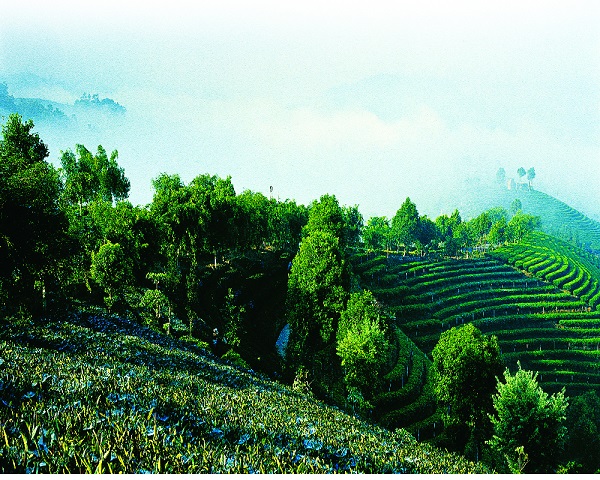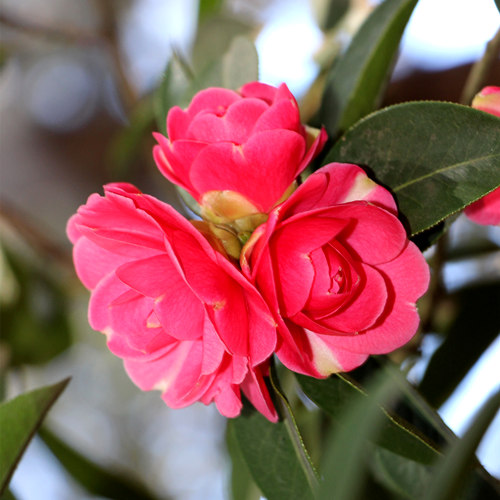
Three Pagodas | A Place as Wonderful as Cangshan Mountain and Erhai Lake in Dali
Dali, a place full of infinite imagination!
Some people say: Dali is a must-visit place at least once in a lifetime, because in Dali time is still, and Dali is like an hourglass, filtering the complexity and leaving peace and tranquility.
Other people say: Dali has been given too many feelings and meanings by people who have been there. It has become a veritable, poetic and distant place that people who have never been there are longing for and people who have been there are dreaming about.

However, Dali is not only a poetic and distant place with Cangshan Mountain and Erhai Lake, but also the center of “Yunnan culture”. The development history of Dali accounts for eighty percent of that of Yunnan. Under such culture, Dali has become a “city of document”. If you compare Dali to a person, then it must be an encyclopedic mind in ancient times.
Perhaps it is because the reputation of "Wind, Flower, Snow, Moon" is so strong that people forget that Dali is actually a historical and cultural city with a profound historical and cultural heritage. The place that can best reflect the "Dali culture" is the Three Pagodas in the Chongsheng Temple, where the Dali culture is concentrated.
Chongsheng Temple - east to the Erhai Lake, west to Cangshan Mountain, about one kilometer north of the ancient city of Dali in Yunnan Province - is an imposing royal temple belonging to the Dali Kingdom in the Nanzhao Period. Backed by Cangshan Mountain, you can overlook the Erhai Lake by boarding the Wanghai Tower at the highest point of the Chongsheng Temple.

From the Daxiong Hall, walking up along the steps to the highest point of the Chongsheng Temple - the Acuoye Guanyin Temple, looking at the close Erhai Lake, big houses on the beach look remote and small, all clustered together; pavilions with flying corners and golden glazed tiles in front of the Chongsheng Temple wind a path in the tall trees. This is what Dali should look like!

There is a huge Guanyin statue in the Acuoye Guanyin Temple, which is a unique type of Guanyin statue in Dali, with kind-looking eyes and brows, looking down at the people who come in and out. There is a small pool called Nine-Dragon Pool in front of the Acuoye Guanyin Temple, and nine lifelike dragons spout around a Buddha statue.
Out of the Acuoye Guanyin Temple, walking down the central axis of the Chongsheng Temple, you can see the core of the Chongsheng Temple - the Daxiong Hall with two smaller halls (the Zushi Hall and the Gaoseng Hall) at both ends.

Among the three halls, it is worth mentioning that the Daxiong Hall and the Gaoseng Hall. The Daxiong Hall has always been known for its majesty, but the Daxiong Hall of the Chongsheng Temple is not only majestic, but it is also special because the Buddha statue of the Daxiong Hall is not placed as anywhere else. The Buddha statues here are placed according to the "Painting of Sakyamuni Buddha" in the Couterdraw Rolls of Buddha Statues by Zhang Sheng Wen of Dali Kingdom.


The Gaoseng Hall has deep roots in the Chongsheng Temple. The honor of the "Royal National Temple" for the Chongsheng Temple comes from the Gaoseng Hall, where nine emperors of Dali Kingdom have become a monk.

Out of the Gaoseng Hall, walking down along the central axis, you will see the most occupied position by buildings, including the eleven-face Guanyin Hall, the Maitreya Hall, Tianwang Hall, the Yaoshi Hall, the Caishen Hall, the Bell Tower, and the Drum Tower.


The Three Pagodas of Dali is one of the six most famous pagodas in China. It consists of a big pagoda and two small pagodas. The two small ones are 70 meters away from the big one. The three are placed in an isosceles triangle in an integrated manner towering in the sky.
The big pagoda, called the Qianxun Pagoda, is located about 300 meters in front of the Chongsheng Temple. Facing to east by south, it is a square and hollow pagoda with stacked sixteen-story brick layers. The height of the pagoda tower is 62.4 meters, consisting 59.4 meters of pagoda body and 3 meters of two-layer base (hitting 69.13 meters if adding the top of the pagoda). With a dignified and elegant outline, its appearance is the same type as that of Xi'an Small Wild Goose Pagoda, Dengfeng Yongtai Temple Pagoda and Luoyang White Horse Temple Pagoda.
Two small pagodas, called the North (South) Pagoda, are 70 meters from the Qianxun Pagoda, which are both flat octagonal, hollow, dense ten-story brick pagodas. Both pagodas are shaped like a lotus flower with chessboard-like base, tower-shaped rafts, and pillars, forming an appearance that is light and gorgeous, which is in sharp contrast with the majestic style of the Qianxun Pagoda.


Standing in front of the Three Pagodas in the Chongsheng Temple, you will once



